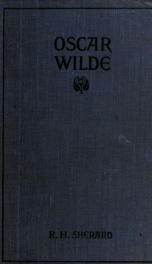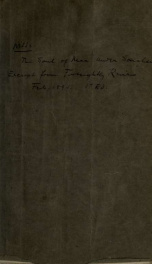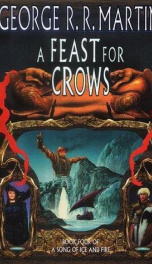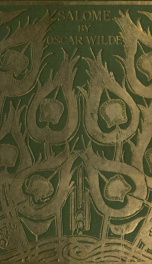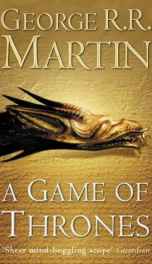Joyce, James

James Joyce (1882-1941) was born in Dublin as the son of John Stanislaus Joyce, impoverished gentleman, who had failed in a distillery business and tried all kinds of professions, including politics and tax collecting. Joyce's mother, Mary Jane Murray, was ten years younger than her husband. She was an accomplished pianist, whose life was dominated by the Roman Catholic Church and her husband. In spite of the poverty, the family struggled to maintain solid middle-class facade.
From the age of six Joyce, was educated by Jesuits at Clongowes Wood College, at Clane, and then at Belvedere College in Dublin (1893-97). Later he thanked Jesuits for teaching him to think straight, although he rejected their religious instructions. At school he once broke his glasses and was unable to do his lessons. This episode was recounted in A PORTRAIT OF THE ARTIST AS A YOUNG MAN (1916). In 1898 he entered the University College, Dublin, where he found his early inspirations from the works of Henrik Ibsen, St.Thomas Aquinas and W.B. Yeats. Joyce's first publication was an essay on Ibsen's play When We Dead Awaken. It appeared in Fortnightly Review in 1900. At this time he began writing lyric poems.
After graduation in 1902 the twenty-year-old Joyce went to Paris, where he worked as a journalist, teacher and in other occupations in difficult financial conditions. He spent in France a year, returning when a telegram arrived saying his mother was dying. Not long after her death, Joyce was traveling again. He left Dublin in 1904 with Nora Barnacle, a chambermaid (they married in 1931), staying in Pola, Austria-Hungary, and in Trieste, which was the world’s seventh busiest port. Joyce gave English lessons and talked about setting up an agency to sell Irish tweed. Refused a post teaching Italian literature in Dublin, he continued to live abroad.
The Trieste years were chaotic, poverty-stricken, and productive. The author wrote most of DUBLINERS (1914), all of A Portrait of the Artist as a Young Man, the play, EXILES (1918), and large sections of Ulysses. Several of Joyce's siblings joined them, and two children, Giorgio and Lucia, were born. A short stint in Rome as a bank clerk ended in illness, and Joyce returned to Trieste. In 1907 Joyce published a collection of poems, CHAMBER MUSIC. The title was suggested, Joyce later stated, by the sound of urine tinkling into a prostitute's chamber pot. The poems have with their open vowels and repetitions such musiucal quality that many of them have been made into songs. "I have left my book, / I have left my room, / For I heard you singing / Through the gloom." In 1909 Joyce opened a cinema in Dublin, but this affair failed and he was soon back in Trieste, still broke and working as a teacher, tweed salesman, journalist and lecturer. In 1912 he was in Ireland, trying to persuade Maunsel & Co to fulfill their contract to publish Dubliners. The contained a series of short stories, dealing with the lives of ordinary people. The stories deal progressively with youth, adolescence, young adulthood and maturity. The last story, 'The Dead', was adapted into screen by John Huston in 1987.
Nothing was accomplished, and it was Joyce's last journey to his home country. However, Joyce had became friends with Ezra Pound, who began to market Joyce's works. In 1916 appeared Portrait of the Artist as a Young Man, an autobiographical novel. It apparently began as a quasi-biographical memoir entitled Stephen Hero between 1904 and 1906. Only a fragment of the original manuscript has survived. The book follows the life of the protagonist, Stephen Dedalus, from childhood towards maturity, his education at University College, Dublin and rebellion to free himself from the claims of family and Irish nationalism. Stephen takes religion seriously, and considers entering a seminary, but then also rejects Roman Catholicism. "-Look here, Cranly, he said. You have asked me what I would do and what I would not do. I will tell you what I will do and what I will not do. I will not serve that in which I no longer believe, whether it call itself my home, my fatherland, or my church: and I will try to express myself in some mode of life or art as freely as I can and as wholly as I can, using my defence the only arms I allow myself to use - silence, exile, and cunning." At the end Stephen resolves to leave Ireland for Paris to encounter 'the reality of experience'. He wants to establish himself as a writer.
At the outset of the First World War, Joyce moved with his family to Zürich, where Lenin and the Dadaist Tristan Tzara had found their refuge. In Zürich Joyce started to develop the early chapters of Ulysses, which was first published in France because of censorship troubles in the Great Britain and the United States, where the book became legally available 1933. The theme of jealousy was based partly on a story a former friend of Joyce told: he claimed that he had been sexually intimate with the author's wife, Nora, even while Joyce was courting her. The book, which takes place on one day in Dublin (June 16, 1904) and reflected the classic work of Homer (fl. 9th or 8th century BC?), gained immediate success. The main characters are Leopold Bloom, a Jewish advertising canvasser, his wife Molly, and Stephen Dedalus, the hero from Joyce's earlier novel Portrait of the Artist as a Young Man. They are intended to be modern counterparts of Telemachus, Ulysses, and Penelope. The story, using stream-of-consciousness technique, parallel the major events in Odysseus' journey home. The famous Sirens are barmaids. However, Bloom's adventures are less heroic and his homecoming less spectacular. The paths of Stephen and Bloom cross and recross through the day. Bloom makes his trip to the underworld by attending a funeral at Glasnevin Cemetary. "We are praying now for the repose of his soul. Hoping you're well and not in hell. Nice change of air. Out of the fryingpan of life into the fire of purgatory."
In March 1923 Joyce started in Paris his second major work, Finnegans Wake, suffering at the same time chronic eye troubles caused by glaucoma. The first segment of the novel appeared in Ford Madox Ford's transatlantic review in April 1924, as part of what Joyce called Work in Progress. The work on Wake occupied Joyce's time for the next sixteen years - the final version of the book was completed late in 1938, and a copy of the novel was present at Joyce's birthday celebration on February 1939.
Joyce's daughter Lucia, born in Trieste in 1907, become Carl Jung's patient in 1934. In her teens, she studied dance, and later The Paris Times praised her skills as choreocrapher, linguist, and performer. With her father she collaborated in POMES PENYEACH (1927), for which she did some illustrations. Lucia's great love was Samuel Beckett, who was not interested in her. In the 1930s, she started to behave erratically. At the Burghölz psychiatric clinic in Zurich, where Jung worked, she was diagnosed schizophrenic. Joyce was left bitter at Jung's analysis of his daughter - Jung thought she was too close with her father's psychic system. In revenge, Joyce played in Finnegans Wake with Jung's concepts of Animus and Anima. Lucia died in a mental hospital in Northampton, England, in 1982.
After the fall of France in WWII, Joyce returned to Zürich, where he died on January 13, 1941, still disappointed with the reception of Finnegans Wake. The book was partly based on Freud's dream psychology, Bruno's theory of the complementary but conflicting nature of opposites, and the cyclic theory of history of Giambattista Vico (1668-1744).Finnegans Wake was the last and most revolutionary work of the author. There is not much plot or characters to speak of - the life of all human experience is viewed as fragmentary. Some critics considered the work masterpiece, though many readers found it incomprehensible. When the American writer Max Eastman asked Joyce why the book was written in a very difficult style, Joyce replied: "To keep the critics busy for three hundred years." The novel presents the dreams and nightmares of H.C.Earwicker (Here Comes Everywhere) and his family, the wife and mother Anna Livia Plurabelle, the twins Shem/Jerry and Shaun/Kevin, and the daughter Issy, as they lie asleep throughout the night. In the frame of the minimal central story Joyce experiments with language, combines puns and foreign words with allusions to historical, psychological and religious cosmology. The characters turn up in hundreds of different forms - animal, vegetable an mineral. The last word in the book is 'the', which leads, by Joyce's ever recurrent cycles, to the opening word in the book, the eternal 'riverrun.'
Although the events are set in the Dublin suburb of Chapelizod, the place is an analogy for everywhere else. Wake's structure follows the three stages of history as laid out by Vico: the Divine, the Heroic and Human, followed period of flux, after which the cycle begins all over again: the last sentence in the work runs into the first. The title of the book is a compound of Finn MaCool, the Irish folk-hero who is supposed to return to life at some future date to become the savior of Ireland, and Tim Finnegan, the hero of music-hall ballad, who sprang to life in the middle of his own wake.
do you like this author?
What readers are saying
What do you think? Write your own comment on this book!
write a commentWhat readers are saying
What do you think? Write your own comment on this author!
write a commentWhat readers are saying
What do you think? Write your own comment on this author!
write a commentGenre
- Books
- Literature & Fiction
- Literature & Fiction / Classics
- Literature & Fiction / Genre Fiction / Action & Adventure
- Religion & Spirituality / Christianity / Church History
- Nonfiction / Transportation
- Nonfiction / Social Sciences / Sociology
- Books / Greek language / Glossaries, vocabularies, etc
- Entertainment / Music / Instruments & Performers / Piano
if you like Joyce, James try:
readers also enjoyed
What readers are saying
What do you think? Write your own comment on this author!
write a commentGenre
- Books
- Literature & Fiction
- Literature & Fiction / Classics
- Literature & Fiction / Genre Fiction / Action & Adventure
- Religion & Spirituality / Christianity / Church History
- Nonfiction / Transportation
- Nonfiction / Social Sciences / Sociology
- Books / Greek language / Glossaries, vocabularies, etc
- Entertainment / Music / Instruments & Performers / Piano
if you like Joyce, James try:
readers also enjoyed
Do you want to read a book that interests you? It’s EASY!
Create an account and send a request for reading to other users on the Webpage of the book!

